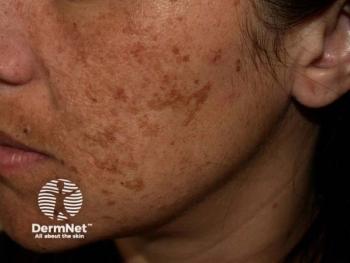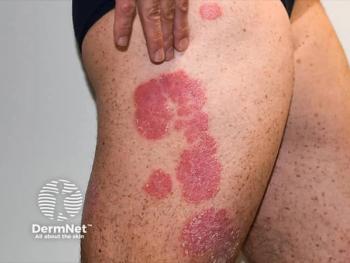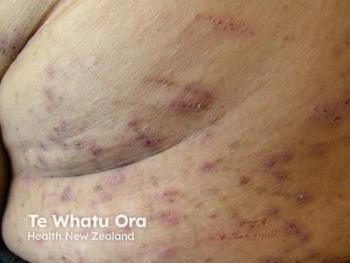
- Dermatology Times, August 2025 (Vol. 46. No. 08)
- Volume 46
- Issue 08
FDA Issues CRL for RP1 and Nivolumab in Melanoma
Key Takeaways
- The FDA issued a CRL for RP1 and nivolumab, citing trial heterogeneity and design issues, despite earlier Priority Review acceptance.
- Replimune plans to request a Type A meeting with the FDA to discuss addressing the CRL's concerns and refining its clinical strategy.
Replimune faces FDA challenges for RP1's approval in advanced melanoma, highlighting complexities in cancer drug development and regulatory scrutiny.
Today, the
RP1 is Replimune’s lead oncolytic immunotherapy candidate, developed from a genetically modified herpes simplex virus and engineered to induce direct tumor cell lysis, enhance immunogenicity, and activate systemic anti-tumor responses. In combination with the PD-1 checkpoint inhibitor nivolumab, Replimune stated RP1 had shown potential in patients with advanced melanoma who had progressed after prior checkpoint inhibitor therapy—an area with significant unmet medical need and limited therapeutic alternatives.
“We are surprised by this FDA decision and disappointed for advanced melanoma patients who have limited treatment options as highlighted by the granting of breakthrough status at the time we provided the IGNYTE primary data,” said Sushil Patel, PhD, chief executive officer, Replimune, in a news release. “The issues highlighted in the CRL were not raised by the agency during the mid- and late-cycle reviews. Additionally, we had also aligned on the design of the confirmatory study. We strongly believe that RP1 in combination with nivolumab can bring substantial benefit to advanced melanoma patients.”
Initial Promise, Subsequent Setback
The BLA was supported by data from the IGNYTE trial, which evaluated RP1 plus nivolumab in patients with advanced melanoma who failed anti-PD-1 treatment. The FDA granted the submission Priority Review status and Breakthrough Therapy designation earlier this year, signaling that the therapy might offer meaningful improvements over existing treatments. At the time, the agency did not request an advisory committee meeting and had not cited major review concerns.2
However, in a CRL the FDA concluded that the IGNYTE study does not constitute an “adequate and well-controlled” trial sufficient to demonstrate substantial evidence of effectiveness. The agency expressed concerns about the heterogeneity of the patient population in IGNYTE, which complicated interpretation of the trial’s results. In addition, the CRL raised design issues with the confirmatory phase 3 trial, IGNYTE-3, particularly around evaluating the individual contribution of each treatment component in the combination therapy. No safety concerns were identified.
Replimune said it plans to request a Type A meeting with the FDA, expected within 30 days, to discuss a path forward. The company noted that many of the issues raised in the CRL were not previously flagged during mid- or late-cycle reviews, and that they had already aligned with the FDA on the design of the confirmatory trial.
FDA's Broader Transparency Initiative
This CRL comes as the FDA is undertaking a broad initiative to enhance transparency in its drug approval process. In a landmark move, the agency recently
In a recent news release, FDA Commissioner Marty Makary, MD, MPH, stated, “For far too long, drug developers have been playing a guessing game when navigating the FDA… We’re one step closer to delivering predictability, with an ultimate goal of bringing cures and meaningful treatments to patients faster.”
Historically, sponsors have often declined to disclose key regulatory feedback, with 1 FDA analysis showing that 85% of the agency’s concerns were omitted from public announcements. The new transparency measures aim to reduce miscommunication, improve industry learning from past mistakes, and enhance the quality of future submissions.
Conclusion
The FDA’s decision to issue a CRL for RP1 and nivolumab underscores both the complexities of cancer drug development and the evolving regulatory environment. While the absence of safety issues offers a degree of reassurance, Replimune now faces the challenge of addressing efficacy concerns and refining its clinical development strategy. The outcome of upcoming FDA interactions will be critical in determining whether RP1 can ultimately fulfill its promise as a novel therapy for patients with advanced melanoma.
References
- Replimune receives complete response letter from FDA for RP1 biologics license application for the treatment of advanced melanoma. News release. Global Newswire. Published July 22, 2025. Accessed July 22, 2025.
https://www.globenewswire.com/news-release/2025/07/22/3119299/0/en/Replimune-Receives-Complete-Response-Letter-from-FDA-for-RP1-Biologics-License-Application-for-the-Treatment-of-Advanced-Melanoma.html - Replimune announces biologics license application acceptance and priority review for RP1 for the treatment of advanced melanoma. News release. Replimune. Published January 21, 2025. Accessed July 22, 2025.
https://ir.replimune.com/news-releases/news-release-details/replimune-announces-biologics-license-application-acceptance-and - FDA embraces radical transparency by publishing complete response letters. News Release. US FDA. Published July 10, 2025. Accessed July 22, 2025.
https://www.fda.gov/news-events/press-announcements/fda-embraces-radical-transparency-publishing-complete-response-letters?utm_medium=email&utm_source=govdelivery
Articles in this issue
4 months ago
Examining Bond-Building Hair Care Treatments4 months ago
Dermatology Times August 2025 Print RecapNewsletter
Like what you’re reading? Subscribe to Dermatology Times for weekly updates on therapies, innovations, and real-world practice tips.


















